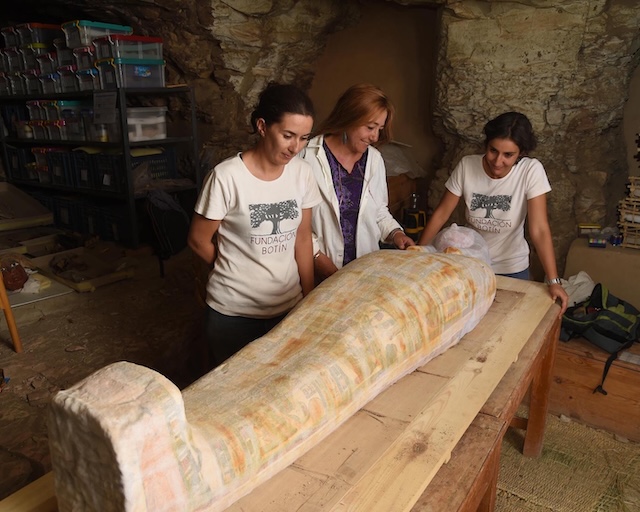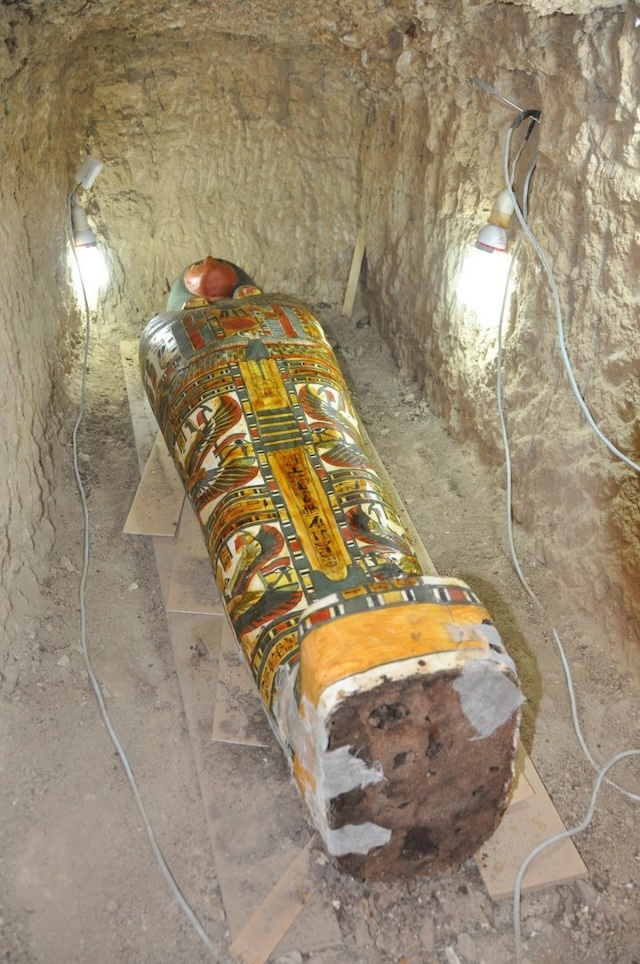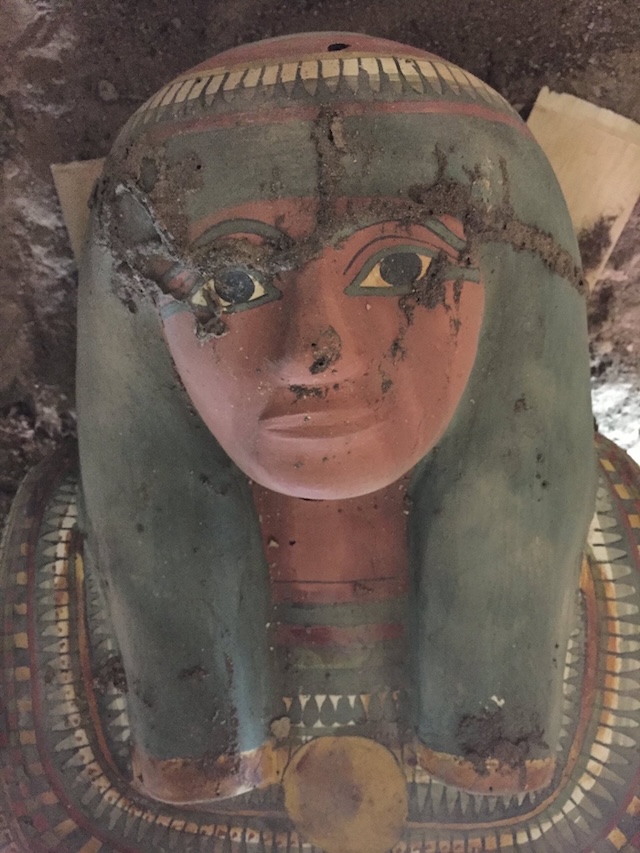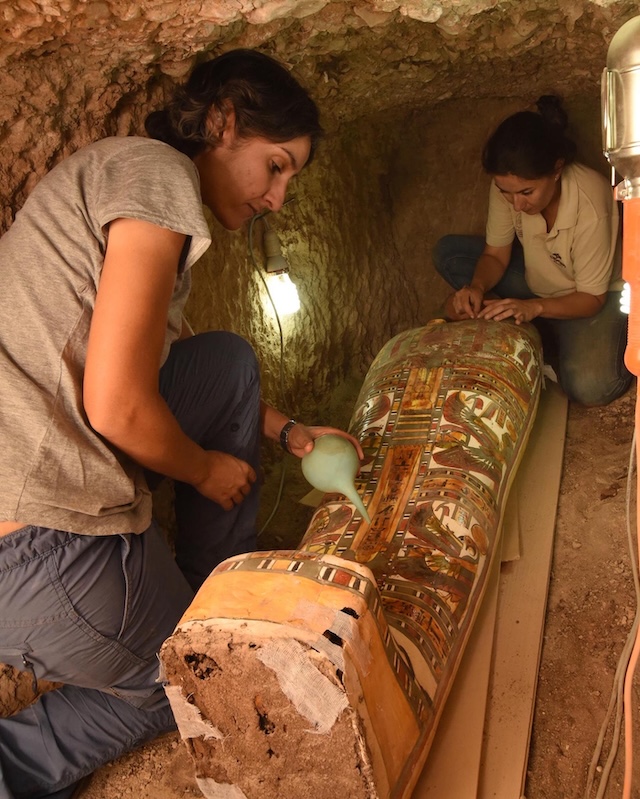Hidden deep beneath Luxor’s sands, archaeologists have made a remarkable discovery: a 2,800-year-old sarcophagus that sheds light on the life of an ancient Egyptian court advisor. Unearthed near the temple of Thutmose III, this beautifully adorned coffin still holds the remains of its mysterious owner, wrapped in the intricate layers of Egypt’s ancient history. As researchers carefully interpret the vibrant hieroglyphs and sacred imagery etched onto its surface, the sarcophagus of Amenrenef slowly reveals secrets from a long-lost era.
Archaeologists Find 2,800-Year-Old Sarcophagus of an Ancient Court Advisor
Archaeologists in Luxor, Egypt, have recently unearthed a stunningly decorated sarcophagus dating back 2,800 years, revealing a glimpse into ancient Egyptian history. The find was made near the pharaonic temple of Thutmose III, adding another layer to the extensive archaeological knowledge of the site. Notably, this sarcophagus still contains the remains of its owner, providing an invaluable opportunity for researchers to delve deeper into the customs and society of that era.

Discovery at the Temple of Thutmose III
This significant discovery emerged from the Spanish Thutmosis III Temple Project, an excavation that has been ongoing since 2008. The project’s primary focus is to explore the funerary complex of Thutmose III, a ruler of the 18th Dynasty who reigned between 1479 and 1425 BCE. Although the sarcophagus was found near the temple, researchers believe it dates to a much later period known as the Third Intermediate Period (1070–712 BCE). This period succeeded the reign of Thutmose III, suggesting the coffin does not have a direct connection to the pharaoh himself.

Details of the Sarcophagus
Despite being attacked by termites, the wooden coffin’s craftsmanship remains visible. The surface of the sarcophagus boasts an array of hieroglyphs and colorful illustrations that have withstood the test of time. According to the archaeological team’s leader, Myriam Seco Alvarez, the sarcophagus belonged to a man named Amenrenef, who once served as an advisor in the royal court.
This discovery adds to the understanding of how influential figures from this era were buried and the care with which they were honored. The use of hieroglyphs and decorative elements on the sarcophagus indicates the importance of Amenrenef’s role in the ancient Egyptian society, as well as the religious beliefs that accompanied him into the afterlife.

Significance of the Hieroglyphs and Imagery
Sarcophagi in ancient Egypt were more than mere containers for the deceased; they were intricate representations of the individual’s life, status, and beliefs. The hieroglyphs on Amenrenef’s sarcophagus provide a wealth of information about his life and the society in which he lived. The images are vibrant, displaying religious figures such as the goddesses Isis and Nephtys and the four sons of Horus, indicating the spiritual significance embedded within ancient Egyptian burial practices.
These symbols and deities were believed to offer protection and guidance to the deceased on their journey to the afterlife. The detailed artistry preserved on this sarcophagus offers modern archaeologists a clearer understanding of the religious iconography and mortuary customs of that time.

Restoration and Future Examination
Following its discovery, the sarcophagus was carefully removed from its tomb and transported to a laboratory for restoration. The preservation and restoration processes are crucial for maintaining the integrity of the sarcophagus, particularly due to the damage inflicted by termites. In addition to physical restoration, researchers plan to carry out X-ray examinations to study the remains inside the coffin. These examinations could reveal insights into Amenrenef’s health, diet, and age at the time of his death, enriching the narrative of this ancient court advisor’s life.
The discovery of Amenrenef’s sarcophagus is a remarkable contribution to the understanding of ancient Egyptian culture and history. As archaeologists continue to piece together the details of his life and the period in which he lived, they also bring modern society closer to the beliefs and customs that shaped one of history’s most fascinating civilizations.
Conclusion
The discovery of the 2,800-year-old sarcophagus near the temple of Thutmose III is more than just an archaeological find; it is a portal into the past, revealing the complexities of ancient Egyptian society and their reverence for the afterlife. The beautifully adorned coffin of Amenrenef not only highlights the artistry and beliefs of the time but also brings to light the personal story of a royal court advisor whose legacy has been preserved for millennia. As restoration efforts continue and further examinations are carried out, each new piece of information contributes to a greater understanding of this ancient civilization, reminding us of the timeless human quest for knowledge and connection with those who came before us.
